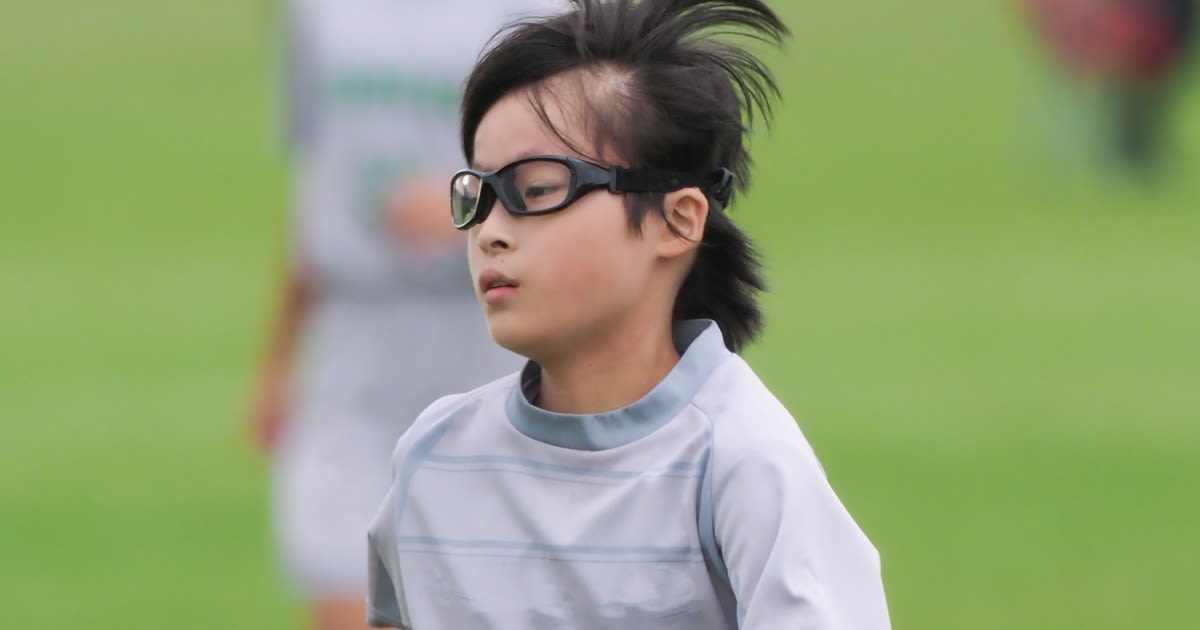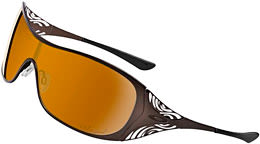Sports eyewear for teens and young athletes

Sports eyewear is essential gear when you are playing sports and enjoying other activities where there is potential for eye injuries. And the right eyewear may actually improve your sports performance as well.
What are the risks of getting an eye injury during sports? Here are a few statistics from "Protective Eyewear for Young Athletes," a joint policy statement recently issued by the American Academy of Pediatrics (AAP) and the American Academy of Ophthalmology (AAO):
More than 42,000 sports and recreation-related eye injuries are reported each year in the United States. (And there may be many more eye injuries than this, as many go unreported.)
More than 70 percent of these eye injuries occur in people under 25, roughly 40 percent occur in people under 15 and eight percent occur in children under 5.
Baseball and basketball are associated with the most eye injuries among players ages 5 to 24.
Proper-fitting sports eyewear can reduce the risk of serious sports-related eye injuries by 90 percent.
For these reasons, pediatricians and ophthalmologists strongly recommend protective eyewear for anyone who participates in sports in which there is risk of eye injury.
READ RELATED: Best kids’ glasses for all their activities
Best sunglasses ...
The right protective eyewear for your sport
The sport you play makes a huge difference in the kind of protection you need. For baseball, you need sturdy eye protection able to withstand the force of a ball moving at high speeds. For basketball, you need eyewear that will protect your eyes from other players' fingers and elbows.
Racquet sports (racquetball, squash, tennis, badminton) are also associated with eye injuries, mainly from balls and racquets hitting the eye at very high speeds. A hockey puck can also do a lot of damage because it moves so fast. Chlorine in swimming pools is another problem, because too much can damage the cornea. If you play an outdoor sport, you'll need eyewear that filters the sun's ultraviolet (UV) light, which has been associated with serious eye problems later in life.
Types of protective eyewear include goggles, face masks, shields, sunglasses and scuba masks. Remember, everyday glasses don't provide enough protection to be considered sports eyewear.
Goggles

"White Intersection" from the I/O series by Smith Optics has rose-colored lenses for good visibility on sunny or cloudy days.
For most sports, you should wear polycarbonate goggles. Polycarbonate is very lightweight and resistant to impact, so it's the best choice for any sport that poses a risk for serious eye injury from a fast-moving ball, puck or racquet.
Goggles come with an elastic band to keep them from sliding off your head. They provide protection for basketball, racquet sports, soccer, non-helmet hockey (field hockey, for example), snow sports (skiing, snowboarding), water sports (skiing, surfing, swimming) and more.
When shopping for swimming goggles, make sure they form a good seal to avoid water containing pool chemicals or infection-causing bacteria from getting in your eyes. This is particularly true if you wear contact lenses while swimming, because bacteria can adhere to the lenses, further increasing your risk for infection.
Proper-fitting swimming goggles should fit against the bony socket around the eye, not too close to the eye where they could affect blood circulation. Many styles of swimming goggles are available as prescription eyewear.
If you plan on swimming outdoors, look for swimming goggles that block 100 percent of the sun's harmful UV rays.
For ski goggles, make sure the eye shield provides 100 percent UV protection, and look for anti-fogging features such as wide vents for maximum visibility.
Face masks
Face masks are another way you can protect your eyes. Usually, these are metal cages that protect all or part of your face. Hockey goalies usually wear face masks, and fencers wear a different style. If you wear a helmet that has a smaller face mask (some American football helmets) or no face mask (such as a baseball helmet), you need an eye shield to protect your eyes.
Eye shields
Polycarbonate shields are very impact-resistant. Look for one that meets the ANSI Z87.1 optical safety standard. American football, baseball and ice hockey are examples of sports in which you should wear a shield while playing. While prescription inserts are available, many athletes opt for contact lenses in these kinds of sports. Again, it's important to get a shield that blocks UV rays if you'll be playing outside.
Sunglasses
If you play a sport that does not involve fast-moving balls, pucks or rackets and there is little risk of "flying elbows" (like cycling, running, golf, fishing, etc.), sport sunglasses will usually provide adequate protection.
In addition to reducing glare and protecting your eyes from the sun's UV rays, sports sunglasses help shield your eyes from dust and other small particles that can get in your eyes in many outdoor situations.
An eye care professional can fit most sport sunglasses frames with prescription lenses.
While most sunglass frame styles are fine for low-risk sports, you can benefit from a frame designed specifically for the sport you're playing. For example, many bicycling glasses feature a wraparound style, which helps to protect your eyes from wind and debris. Also, some golf sunglasses are designed so that the frame doesn't interfere with your view of the ball.
Remember, for outdoor activities it's crucial that your sunglasses block UV light; the best ones block 99 percent to 100 percent of both UVA and UVB rays.
You also might want to choose polarized sunglasses or sports eyewear with photochromic lenses. Polarized lenses reduce glare and reflected light from water, snow, sand and other surfaces. Photochromic lenses darken automatically in sunlight and adjust in response to varying levels of UV rays. [Read more about selecting sunglasses.]
Anti-reflective (AR) coating also is a good idea on sports eyewear and sports sunglasses. AR coating eliminates reflections in your lenses that cause glare and can affect your reaction time and performance.
Underwater masks
With diving and snorkeling masks, your best bet is a glass lens, because glass is the most scratch-resistant material. You can get masks with prescription lenses at many optical stores. Read more about scuba diving masks and swim goggles.
READ NEXT: How sports glasses can help young children who aren’t ready for contacts
Original version of this article was by Gina White.
Protective eyewear for young athletes - 2013. American Academy of Ophthalmology. www.aao.org. Accessed March 2016.
Page published on Wednesday, February 27, 2019









